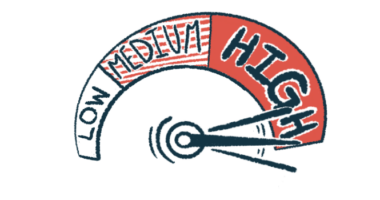Antibody-targeted approach bests plasma exchange in AAV: Study
Protein A immunoadsorption also associated with lower risk of death

An approach that removes specific antibodies from a person’s blood is better than a standard, more general blood-cleaning procedure called plasma exchange at clearing the self-reactive antibodies that drive ANCA-associated vasculitis (AAV).
That’s according to a small study in China that looked at data from AAV patients with severe kidney involvement who underwent either procedure in addition to standard treatment.
The antibody-targeted approach, called protein A immunoadsorption (PAIA), also was associated with a lower risk of death relative to plasma exchange in this group of AAV patients.
These findings suggest that PAIA “may be beneficial for severe AAV in clinical practice,” the researchers wrote.
The study, “Efficacy of protein A immunoadsorption and therapeutic plasma exchange in ANCA-associated vasculitis with severe renal involvement: a retrospective study,” was published in the Annals of Medicine.
In AAV, the immune system wrongly produces self-reactive antibodies, called ANCAs that ultimately lead to inflammation and damage to small blood vessels. ANCAs are mainly of the IgG antibody type and their most common targets are myeloperoxidase (MPO) and proteinase 3 (PR3), two enzymes found in a type of immune cell called neutrophils.
When AAV involves the kidneys, it can damage the many filtering units that remove waste from the blood. As a result, some patients experience a loss of kidney function that can progress to kidney failure. Kidney involvement “is a major risk factor for AAV mortality,” the researchers wrote.
Plasma exchange a possible treatment for active kidney disease
Patients are usually treated with a combination of immunosuppressive medications to push the disease into remission. However, for patients with active kidney disease, plasma exchange may be considered.
Plasma exchange, also called plasmapheresis, is a therapeutic approach used to clean the blood by removing and replacing a person’s plasma — the liquid portion of blood that contains water, salts, and proteins such as antibodies.
Adding plasma exchange, which can remove ANCAs from the blood, to standard immunosuppressive treatment was previously shown to reduce the risk of kidney failure in AAV patients, but not their risk of death. Moreover, it was associated with a higher rate of serious infections.
PAIA is a procedure that uses the protein A from a bacterium to capture antibodies, particularly IgGs, and pull them out of a person’s blood while passing through a specific column. Contrary to plasma exchange, this approach is specific for antibodies and therefore does not need to involve plasma replacement.
In a prior study, PAIA was shown to help speed remission in AAV patients with serious kidney disease as well as reduce the risk of progression to kidney failure or death.
Study examines PAIA vs. plasma exchange
However, no study to date has compared the effects of plasma exchange with those of PAIA in people with severe AAV.
To address this, a team of researchers in China looked back at data from 48 AAV patients with severe kidney involvement who received either plasma exchange (30 patients) or PAIA (18 patients) at a single Chinese hospital from January 2018 to February 2021.
Their median age was 61 years, most (70.8%) were men, and they had been living with the disease for a median of 1.5 months (range, 1 to 3.8 months).
Both groups underwent a similar average number of plasma exchange or PAIA sessions (5.1 vs. 5.4). All patients had received also standard AAV treatment, most commonly glucocorticoids plus cyclophosphamide.
Outcomes were assessed over a median follow-up of 14.5 months.
Given that most patients (95.8%) tested positive for anti-MPO antibodies, the researchers focused on changes in anti-MPO antibody levels; that data was available for 17 patients in each group.
Within one month of the procedure, these antibodies showed a significantly greater reduction in the PAIA group compared with the plasma exchange group (80.9% vs. 52.7%). This suggested the former may be better than plasma exchange at clearing ANCAs from the blood.
Available data from 13 patients in the PAIA group and six patients in the plasma exchange group showed that PAIA also was significantly superior at removing IgGs, leading to a 79.4% level drop versus 30.4% in the plasma exchange group.
“PAIA has a stronger ability to clear [disease-causing] antibodies than [plasma exchange] because of the larger volume of plasma that can be processed at one time,” the researchers wrote.
At six months, more patients treated with PAIA had achieved remission than those in the plasma exchange group (66.7% vs. 56.7%).
By the end of follow-up, eight patients (44.4%) in the PAIA group and 13 (43.3%) in the plasma exchange group had progressed to kidney failure. Death was reported in two patients (11.1%) in the PAIA group and 12 (40%) in the plasma exchange group.
Statistical analyses showed that patients in the PAIA group had a 76% lower risk of death compared with those in the plasma exchange group. They also had a 54% lower risk of progressing to kidney failure or dying. However, there was no significant difference between the groups in terms of risk of kidney failure alone.
These findings highlight that “additional treatment with PAIA may be a beneficial option for severe AAV,” the researchers wrote.
Further analyses showed that being older than 60 years, having lower blood levels of the albumin protein (a sign that the kidneys may be damaged), and failing to achieve remission at six months were all independent risk factors for death.
In turn, higher blood levels of a waste product called creatinine (a sign that the kidneys may not be clearing it from the blood) and lower levels of hemoglobin (the protein that carries oxygen in red blood cells) were independent risk factors for kidney failure.
“Active intervention should be carried out for the above risk factors, and more precise and personalized treatment needs to be adopted to save [a] patient’s life,” the researchers wrote.







